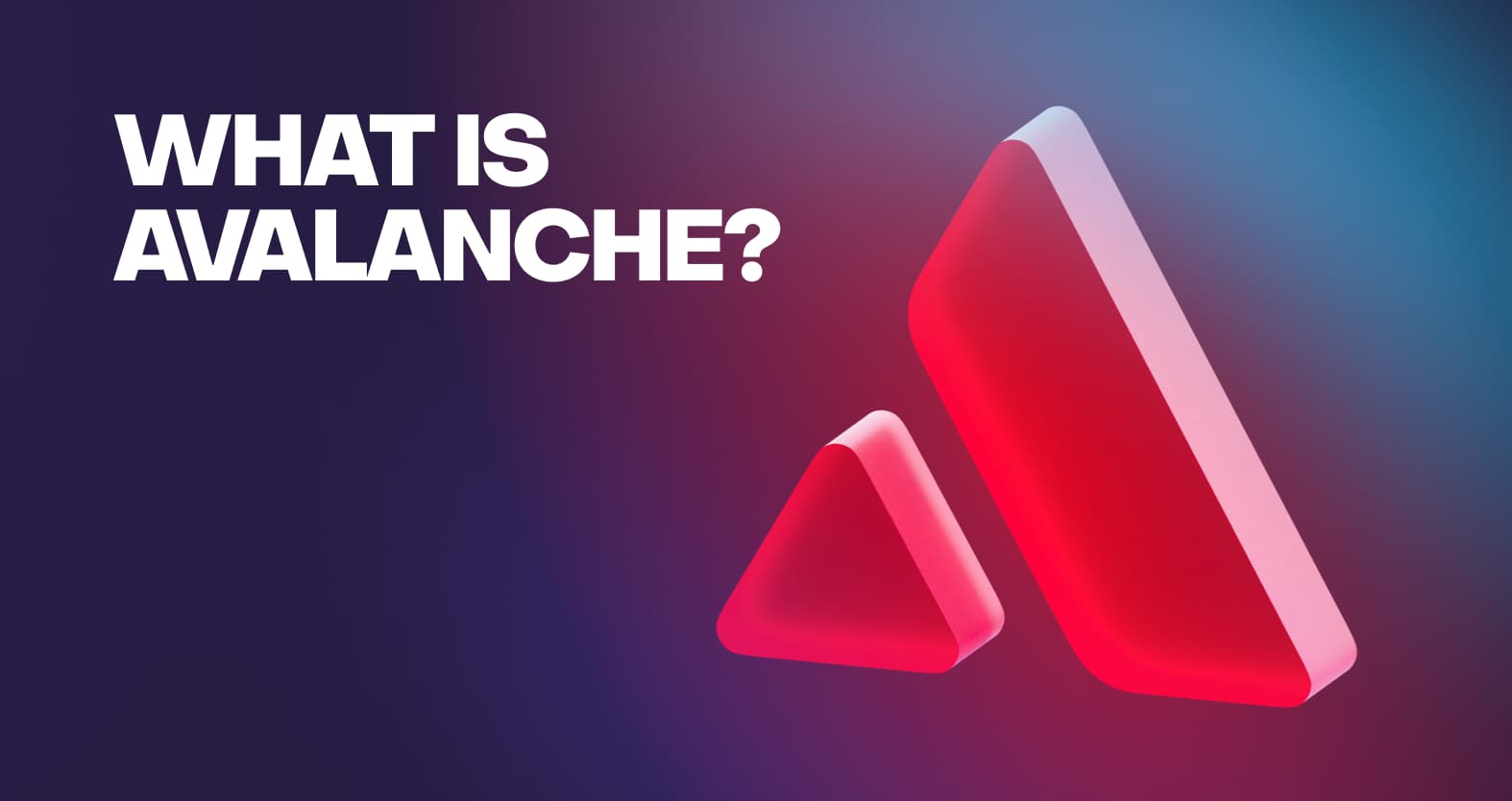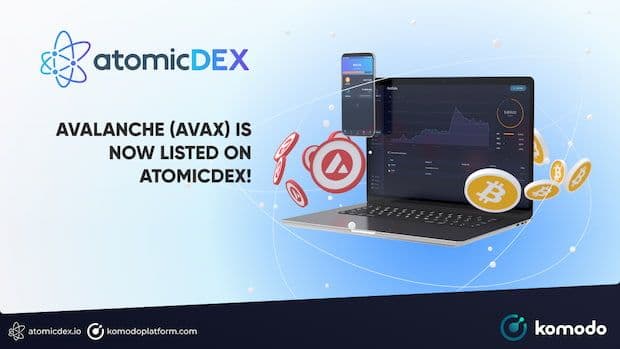06 October 2022
Updated: 25 May 2023
What Is Avalanche (AVAX)? — L1 Blockchain Focused On Scaling

Table of contents
Table of contents
Decentralized finance is proving to be a driving use case within the cryptocurrency space, but the influx of users and wealth coming into the market has highlighted some drawbacks in the current most-used networks.
As users are looking to mitigate unsustainably high transaction fees and slow transaction finality, these bottlenecks have led to increased adoption across competing and complementary smart contract platforms.
One of these platforms is Avalanche, a relatively new open-source blockchain that allows for scalability, complete decentralization, interoperability, and many more value-adding features. Avalanche has seen its ups and downs since its inception, but as new, functional, and innovative decentralized applications continue to be built on the platform, offering greater user value, the network is continuing to be adopted en masse. In this guide, we will help determine if Avalanche is a possible Ethereum killer or just another smart contract platform looking for market share in a rapidly growing industry.
Avalanche's Background
Avalanche was created by AVA Labs, an organization founded and led by world-renowned computer scientist, researcher, blockchain expert, and Cornell professor Emin Gun Sirer. Sirer has been involved in the distributed ledger tech industry almost since its inception, and in September 2020, his newly established company launched a network that was the culmination of all of his research and hard work.
Avalanche raised $18 million in a seed fundraising round from VC firms like Andreessen Horowitz and Polychain Capital, which are two of the largest and most influential investors in the blockchain industry. They subsequently raised an additional $42 million in under 5 hours. In June 2021, the project raised an additional $230 million via a private sale of AVAX.
Avalanche launched with the explicit goal of offering a faster, more cost-effective, and overall more efficient network. Following this raise, they were ready to begin their journey. Since the AVAX coin sale in July 2020, Avalanche (AVAX) has continued to remain a highly-valued cryptocurrency. As of June 2023, it is the 17th largest crypto by market cap, with a total supply worth around $4.7 billion. Many new projects are building on and migrating to the Avalanche blockchain ecosystem, establishing a base of users and applications that can help the network become more pervasive.
The Inner Workings
Avalanche is a network that utilizes multiple blockchains, creating each chain as a separate instance of a virtual machine. Avalanche supports numerous virtual machines, such as EVM and WASM, with each new blockchain deployed as a subnet of the broader Avalanche network. Each subnet has its own validators determining blockchain consensus, allowing for quick transaction validity and easy interactions between complementary subnets. This makes Avalanche a network of platforms, with continuously growing new subnets like the ever-expanding heads of a Hydra.
Avalanche utilizes a Proof-of-Stake (PoS) consensus mechanism that combines features of Nakamoto consensus and Classical consensus to create a novel and potentially superior verification mechanism. Through this methodology, Avalanche can achieve decentralization and high scalability while also being energy-efficient and fast, bringing together all of the best available consensus features. Avalanche claims that this consensus mechanism allows for an average transaction finality of 0.79 seconds while also supporting more transactions per second than a centralized ledger like the one used by Visa.

The Future of DeFi?
Many smart contract platforms and DeFi platforms claim to be the 'future' of the industry, but Avalanche is actually delivering. The project is presenting many unique platform-native applications. Besides offering an Ethereum bridge, making it easy for Avalanche users to interact with ERC721 tokens or ERC1155 tokens, Avalanche has a plethora of its own offerings. One of the most popular Avalanche applications is the Pangolin exchange, a decentralized cryptocurrency exchange (DEX) and automated market maker (AMM) platform that offers a peer-to-peer network that is simple, fast, and cost-effective. Pangolin is already closing in on a $1 billion fully diluted market cap, showing the usability and value that users are receiving from Avalanche technology.
Many other applications utilize Avalanche's infrastructure, such as bZx - a decentralized borrowing, crypto lending, and margin trading platform, e-Money - an interest-bearing fiat-backed stablecoin provider, YIELD - an automated portfolio and wealth management application, Prosper - a decentralized prediction market, and many more. As users continue to see the decentralized offerings available on Avalanche and its highly competitive fee structure, more and more teams will build their projects on Avalanche, bringing new users and stakeholders into the Avalanche economy.

Buying and Selling AVAX
As a top 50 cryptocurrency by market cap, you can purchase AVAX on pretty much any centralized exchange. Exchanges such as Binance, Huobi, Kucoin, and Gate.io support AVAX, so you have many purchasing options with deep liquidity if you want to opt for a centralized exchange.
In addition to having its own native network, Avalanche (AVAX) is also available as a BEP-20 token on Binance Smart Chain. This means that AVAX can be traded on any exchange that supports BEP-20 tokens like PancakeSwap. BEP-20 AVAX is also now supported on AtomicDEX - a cross-chain decentralized exchange and non-custodial wallet rolled into one application. AtomicDEX is the metaverse of crypto - making it easy to buy, sell, and trade cryptocurrencies on several blockchain networks. It’s now easier now than ever before to gain exposure to new assets on a trustless platform. AtomicDEX supports many digital assets besides AVAX, such as Dash, Raven, Qtum, and more.
Conclusion
All-in-all, Avalanche presents a very promising blockchain network that is already offering its stakeholders and user base massive utility. Unlike many other networks focused on generating large returns for their team members and initial investors, Avalanche focuses on building out its ecosystem, creating a competing DeFi atmosphere that tries to offer the best of all available DeFi iterations from other chains. As Avalanche continues to introduce more applications and attract more users, it has the potential to establish itself as one of the go-to decentralized smart contract networks.
AVAX Storage Options
If you are looking for a non-custodial wallet that offers the ability to hold multiple cryptocurrencies from different chains, you can opt for the AtomicDEX wallet. This hybrid wallet allows users to store AVAX and trade natively cross-chain with Bitcoin, Ethereum, Dogecoin, Polygon, and many other popular cryptocurrencies.




